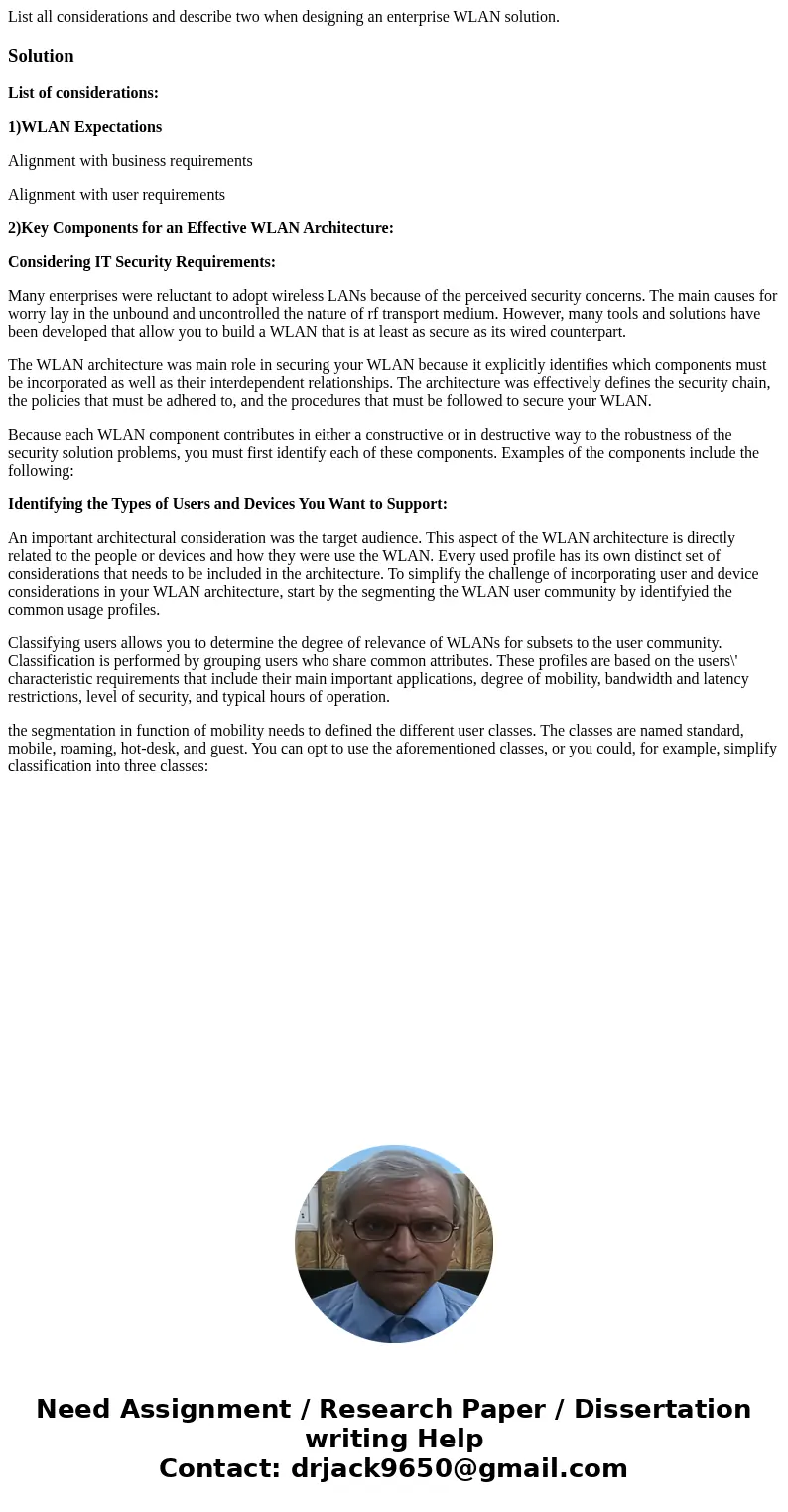List all considerations and describe two when designing an e
List all considerations and describe two when designing an enterprise WLAN solution.
Solution
List of considerations:
1)WLAN Expectations
Alignment with business requirements
Alignment with user requirements
2)Key Components for an Effective WLAN Architecture:
Considering IT Security Requirements:
Many enterprises were reluctant to adopt wireless LANs because of the perceived security concerns. The main causes for worry lay in the unbound and uncontrolled the nature of rf transport medium. However, many tools and solutions have been developed that allow you to build a WLAN that is at least as secure as its wired counterpart.
The WLAN architecture was main role in securing your WLAN because it explicitly identifies which components must be incorporated as well as their interdependent relationships. The architecture was effectively defines the security chain, the policies that must be adhered to, and the procedures that must be followed to secure your WLAN.
Because each WLAN component contributes in either a constructive or in destructive way to the robustness of the security solution problems, you must first identify each of these components. Examples of the components include the following:
Identifying the Types of Users and Devices You Want to Support:
An important architectural consideration was the target audience. This aspect of the WLAN architecture is directly related to the people or devices and how they were use the WLAN. Every used profile has its own distinct set of considerations that needs to be included in the architecture. To simplify the challenge of incorporating user and device considerations in your WLAN architecture, start by the segmenting the WLAN user community by identifyied the common usage profiles.
Classifying users allows you to determine the degree of relevance of WLANs for subsets to the user community. Classification is performed by grouping users who share common attributes. These profiles are based on the users\' characteristic requirements that include their main important applications, degree of mobility, bandwidth and latency restrictions, level of security, and typical hours of operation.
the segmentation in function of mobility needs to defined the different user classes. The classes are named standard, mobile, roaming, hot-desk, and guest. You can opt to use the aforementioned classes, or you could, for example, simplify classification into three classes:

 Homework Sourse
Homework Sourse